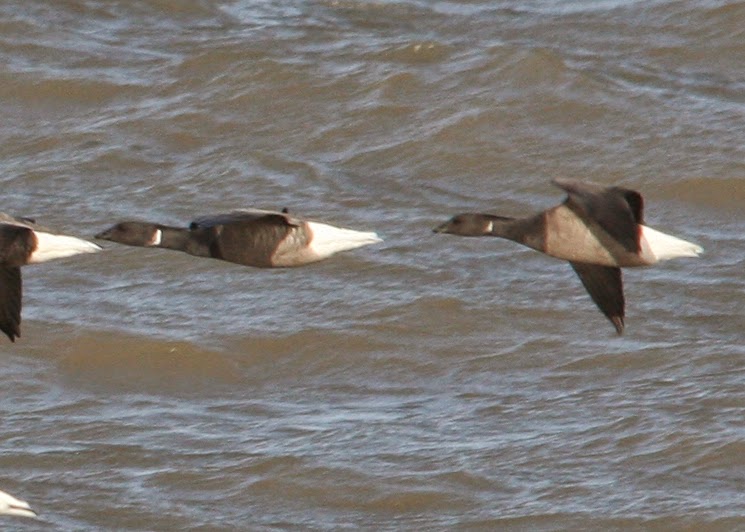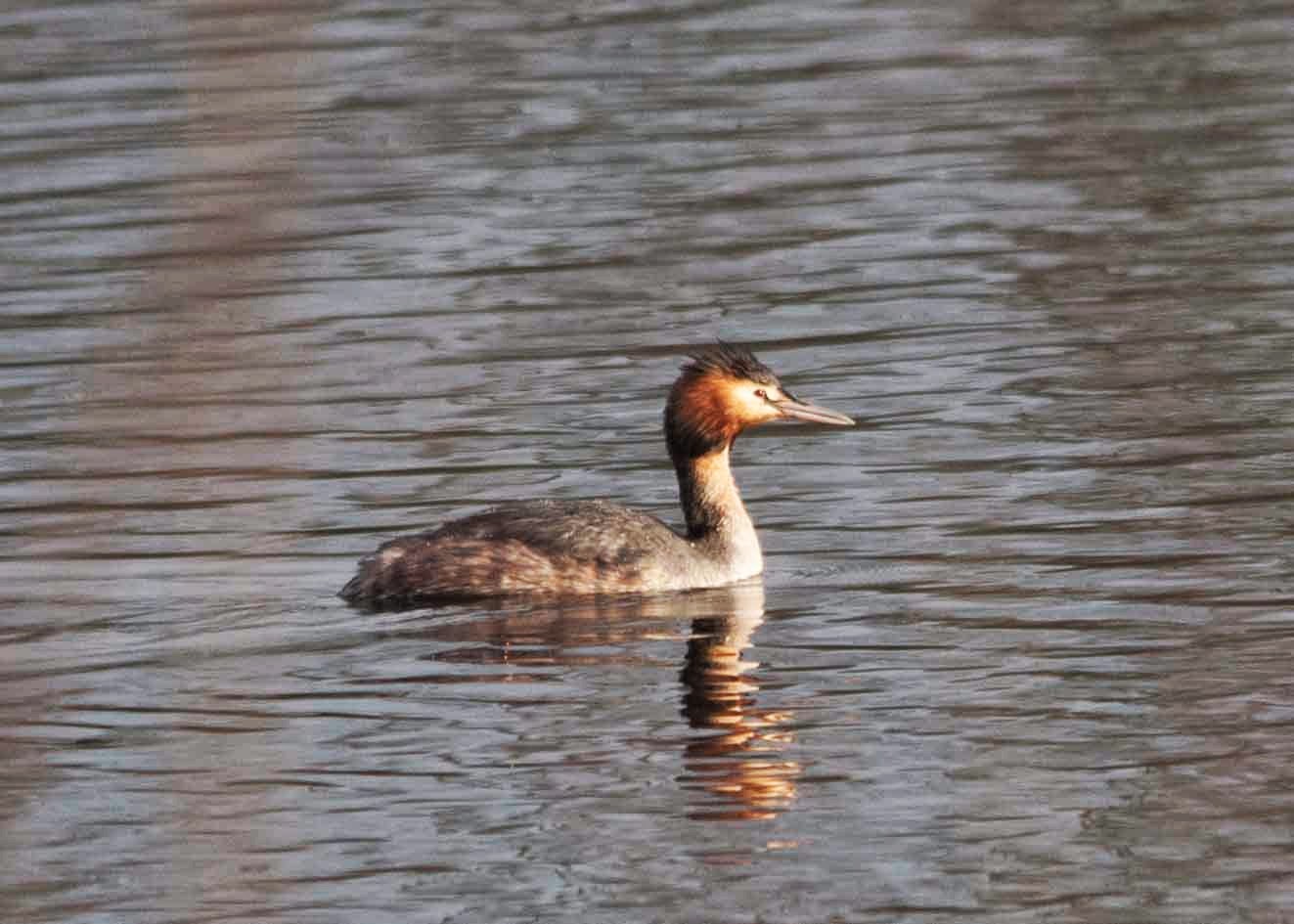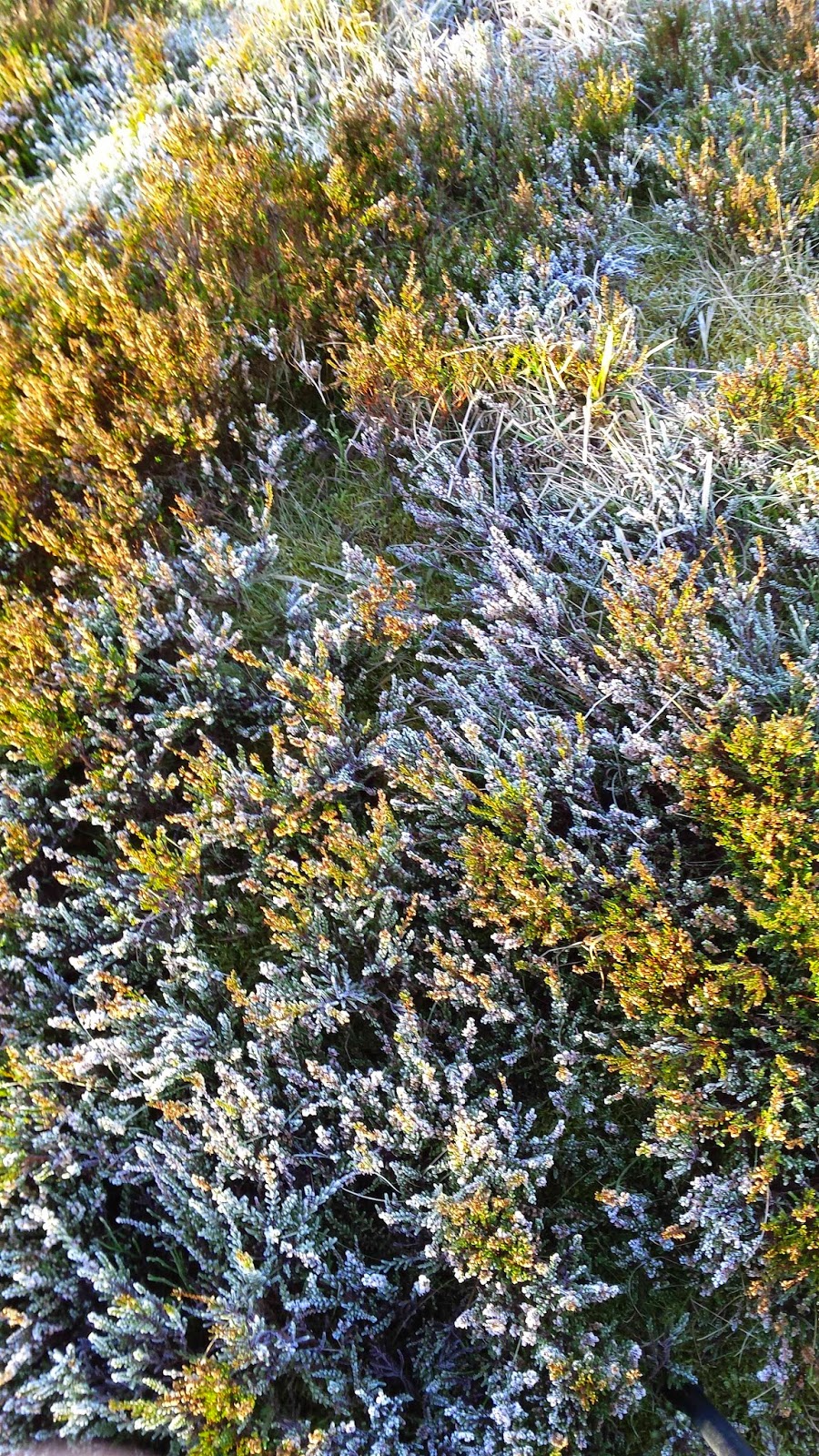Definitely a frigid day at Reculver at the end of the afternoon (I only got back to the car just after 5 pm, proper dark), with a bit of a go with the 500 mm lens and the EOS350. Both Monty and I hoping to get back to our longer walks from now on - but will I get the marking done if I lose my marking focus??
A Short-eared Owl,
Asio flammeus, flushed across the oyster marsh channels, was beautiful, very long-winged and ghostly. I saw the large pale grey-brown bird, with very long wings in comparison with its body, floating over the channels and banks, Maybe the second bird I have seen, I remember seeing Short-eared (I think) Owls with Phil down at Rye Harbour, many years ago.
In the first picture you can easily see the pale belly and underside behind the dark "head" region, one of the main characters that separates Short-eared from Long-eared (description applies to the nominate Eurasian race). Long-eared Owls have a dark belly, that continues on from the head, and contrasts clearly with the pale underside of the wings. There is also a hint of the possible yellow rather than orange eyes, but this is the one character that in the end I couldn't be at all sure of. In this picture the light caught the colour of the bird, turning it a warm biscuit colour.

In this next photo the colour is much less picked up by the last of the evening light. The barring of the tail is seen very clearly, and although this feature is found in both Short-eared and Long-eared Owls, it is more distinct in Short-Eared, as I think can be seen here. In this photo the dark tips to the wings are more or less as clear as the carpal marks, which should be right for Short-eared. In Long-eared the carpal marks are very clear and far more obvious than the wing-tips, which are also fairly clearly barred in Long-Eared, rather than dark-tipped, so to say.
The other thing you can see is the white trailing edge to the wing, which is another of the clear characters separating the two species. Also Long-tailed would be rare, although not impossible sight!
The distribution of the species is fairly world-wide, including Eurasia, North Africa, North and South America, various Caribbean Islands and even the Falklands and the Hawaiian Islands. Its apparently quite a wanderer, one of the most widely distributed birds in the world, although it hasn't reached Australia! It is Least Concern worldwide.
We don't really know how Short-eared Owls are doing as a breeding bird in the UK, but from BTO surveys there are thought to be maybe quite a few hundred or perhaps a few thousand pairs in Scotland and other areas where there is mixed moorland or young forestry plantations. Latest figures suggest about 600 - 2000 pairs. In Europe most observers seem to think that numbers are well down on previous decades and it is graded as Amber status. However it is a very difficult bird to estimate populations of, and there is a lot of uncertainty about the counts. This uncertainty is compounded by its very variable and irruptive population status, apparently very dependent upon vole numbers.
The migratory tendency may be linked to the population size in any particular year. Movements of up to 2000 km have been recorded, but UK birds are less migratory than their continental cousins.
The highest densities are found in areas of mixed rough grasslands and heather moors (marginal hill ground or ‘white moor’). A typical home range is around 200 hectares (~300 football pitches) and it seems that a variety of grassland types and heights within range is beneficial. However, territory sizes vary considerably, ranging from 40 to 875 hectares. Resident owls will defend winter territories of about 6 hectares. Winter communal roosts, occasionally of many birds, may occur.
Young conifer plantations can also be important habitats, though second and later rotation plantings may be less frequently used. (did this cause the apparent increase through to the 70s and subsequent decline? Lowland rough grassland, marshes and coastal sand dunes are also sometimes used for breeding though their use of these areas can be erratic (except on some of the western islands and Orkney). In Norfolk they tend to focus on Brown Rats. European birds use more agricultural habitats, and probably prey upon a different range of mammals.
Sexual maturity is attained within one year. It is a generally monogamous bird, with the males hovering and then swooping down (sky-dancing), perhaps wing-clapping, in front of a female in a courtship dance. Because it is a nomadic bird, site and mate fidelity from one year to another is likely to be low. Courtship may begin as early as February, but is later in higher latitudes.
The nest is on the ground, lined and camouflaged, with normally about 5 - 7(12) eggs. This makes the species unusual, as most owls nest up in trees, and generally do not make their own nests, taking over the nests made by others. Normally the females incubate, and are fed by the males. Chicks scatter from the nest 12-17 days after hatching to hide in the undergrowth, but cannot fly until 25 days or older. There is one brood a year (although replacement clutches are laid following predation) and the young fledge after about 4 weeks in total.
Hunting is mainly at night but often seen during the evening and the rest of the day, often low looking for voles and other small mammals. In the UK typical prey could be predominantly short-tailed vole, but these are absent on Orkney, so there the SEOs have adapted to eating the Common Vole. They will also predate upon birds, particularly waders and gulls/terns by the coast, passerines inland.
Using radio-telemetry, short-term cycles of activity, with a period of about 3 h, were detected in Orkney voles
Microtus arvalis orcadensis and in one short-eared owl
Asio flammeus, their principal predator. Visual observations showed that owls from four adjacent nests had similar activity patterns. These cycles tended to be synchronous both within and between the two species. Short-eared owls thus appeared to be foraging optimally by timing their hunting to coincide with peaks in vole activity, i.e. at times of maximum potential yield. The extent of diurnal activity in short-eared owls varied seasonally. Daytime activity was conspicuous for only a short period in spring and early summer. Otherwise owls were almost exclusively nocturnal. These seasonal changes in activity were probably a response to variations in vole diurnality, vole population size and daylength. Harassment and kleptoparasitism may have been additional influences that interacted with these seasonal factors to determine the extent of preferred nocturnal hunting. In addition, it is possible that the energetic constraints of breeding may force owls to hunt during daylight. Were males only to hunt at night then they may not be able to provide enough food for their mate and young at a time when nights are short and vole populations are only starting to increase.
They tend to be silent on the wintering grounds, but with occassional scratchy barking calls during the breeding season.
There are some wonderful videos on the BBC site, http://www.bbc.co.uk/nature/life/Short-eared_Owl#p0039c4y
There were a lot of Black-headed Gulls and Herring Gulls on the beach, exploring the wide sand exposed by the low tide.
Cormorants overflew regularly:













































